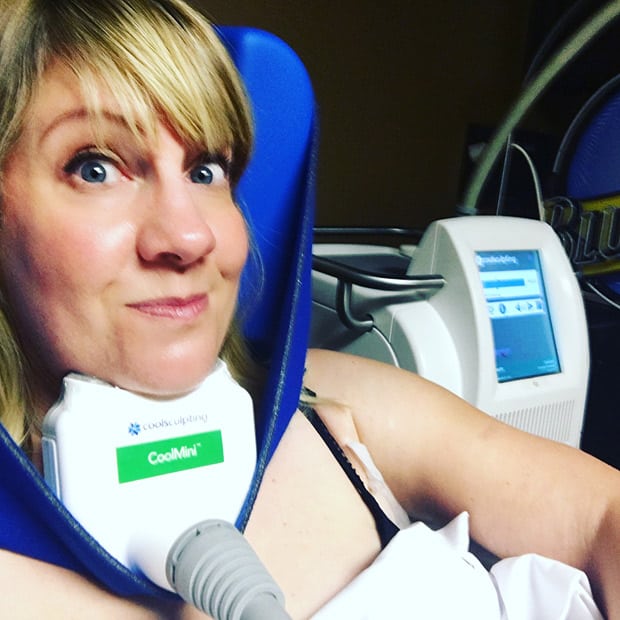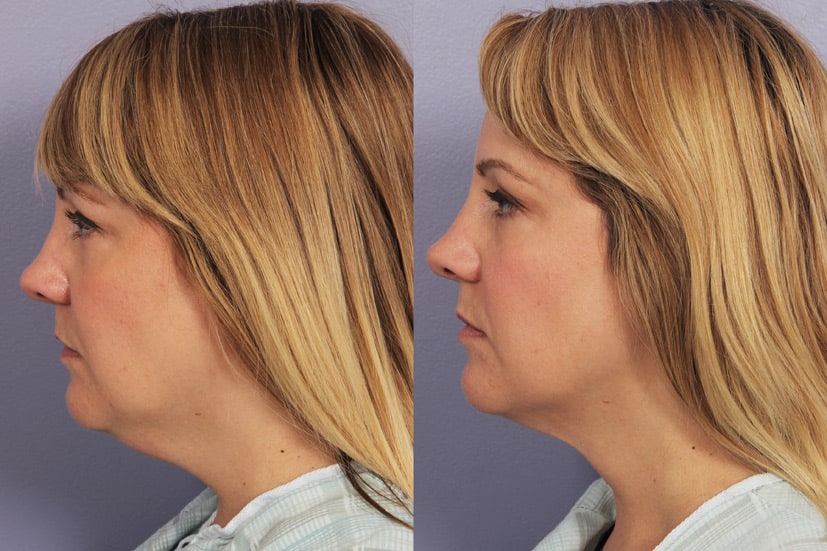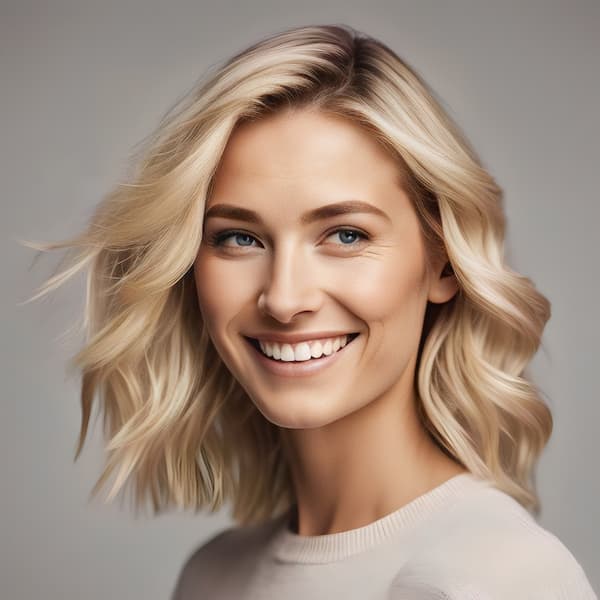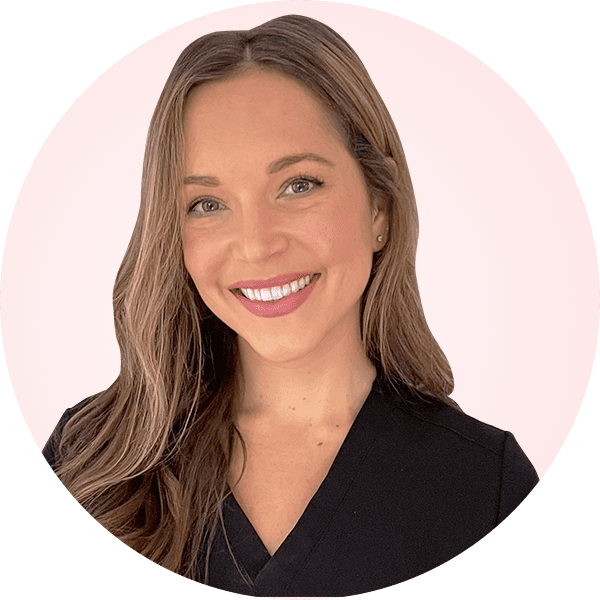What Is Facial Contouring? 5 Non-Invasive Treatments to Try
This post may contain affiliate links, which means I may receive a small commission, at no cost to you, if you make a purchase.

Want to turn back the hands of time on your skin or simply enhance your features without going through intense surgery?
We got the answer!
Find out what facial contouring is and what all the hype behind non-invasive treatments is about.
Yes, there may be innovative facial tools such as crystal facial rollers that can be used every day to achieve temporary results and look as if you’ve had a face sculpting surgery.
And the power of makeup may have gone beyond our expectations today, especially when it comes to contouring.
But the results for both are limited to hours and then they wear off.
We understand that face contouring surgery is a lifetime commitment. Lucky for you, there are options that you can try, without going through operations.
If you want longer-lasting results, various treatments and procedures can even be specifically tailored just for you!
Read on to find out what facial contouring is and what the most talked-about non-invasive procedures are.
Table of Contents
What Is Facial Contouring?
Beauty standards change over time. Gone are the days when people are shamed and stigmatized for altering their appearance.
As more and more celebrities and influential people get up close and personal with the different treatments they’ve undergone, the more society is accepting cosmetic surgery and how common facial contouring surgeries have become today.
Facial contouring is one of the most sought-after plastic surgery procedures.
Not only does this bring effective feature-altering and enhancing results that would last a lifetime, but it also rewinds and reduces visible signs of aging.
If you’ve decided to get the procedure and have considered all the factors including the effects, cost, and overall process, you can try surgical face contouring operations.
These include procedures such as rhinoplasty, liposuction, and other surgeries.
But if you want to avoid going through the operating room and still aspire to have almost the same effects, there are non-invasive or non-surgical procedures you can try instead.
Non-Invasive or Non-Surgical Procedures
Aging is the most notorious identity thief, and as much as we want to stop it, it naturally occurs to all of us.
But worry no more!
Here are non-surgical options for you to reverse its signs and get to the best version of yourself no matter what age, gender, and skin problem you have.
| Procedure | Type of Procedure | Benefits | Result Duration | Possible Risks and Side Effects |
|---|---|---|---|---|
| Filler | Injection |
| Depending on the type of filler to be used, effects may last for 6 months to 5 years | Radiofrequency |
| Botox | Injection |
| 3 to 6 months |
|
| Kybella | Injection | Eliminates stubborn double chin | Can be permanent; multiple treatments may be required |
|
| Cool Sculpting | Suction device that induces fat-freezing |
| 6 to 9 years indefinitely |
|
| Radiofrequency | Wand-type device that produces radio waves or frequency |
| Minimum of 6 months to over a year |
|
Fillers
Do you want to get rid of the wrinkling and sagging skin and bring back the volume to your face? Or do you just want to add that extra plumpness in an instant?
If so, dermal fillers are the answer!
If you’ve spent an ample amount scrolling through social media, you probably know that this is one of the most popular non-invasive facial contouring techniques.
Aging causes our skin to lose one of the most important substances in our body: collagen. This, in turn, causes an overall volume loss in certain areas, such as the cheeks and temples.
This makes the skin lose elasticity, resulting in saggier skin.
Facial contouring fillers or dermal fillers are intended to restore or add volume to certain areas on the face. Others also get fillers not just for age-related concerns but for a more contoured appearance.
Fillers can be added to places like the cheeks, chin, and jawline, depending on your desired outcome.
The result may lead to the following:
- Improved and symmetrized facial features
- Plumped and enhanced the lips and cheekbones
- Smoothened and diminished lines and wrinkles
- Restored volume to the sagging and sunken areas of the face
Through the use of a fine needle, gel-like substances (i.e., off-the-shelf fillers made from synthetic materials or naturally produced body substances like fat) are injected into various areas in the face.
There may be varying types of fillers, but almost all of them are associated with the supply and production of collagen in the body.
These are some of the substances found in fillers:
- Hyaluronic acid (HA) — temporary filler; naturally occurring acid in the skin; typically lasts for 6 to 12 months
- Calcium hydroxylapatite (CaHA) — temporary filler; naturally occurring substance found in the bones; lasts for up to 12 months on most patients
- Poly-L-lactic acid (PLLA) — semi-permanent; also known as Sculptra; injectable biostimulant that stimulates the body to produce its own collagen; effects may last for up to 2 years
- Polymethylmethacrylate (PMMA) — permanent filler; also known as Bellafill; biocompatible, synthetic substance; effects may last for up to 5 years
Compared to naturally produced substances, synthetic fillers last longer because they aren’t absorbed by the body; however, the longevity of the result still depends on the area and the type of substance injected.
The denser substances tend to last longer as they are injected deeper into the skin.
PMMA fillers are non-biodegradable, so they remain in place for years after the treatment and are considered to be somehow permanent.
In this video, a medical professional explains the facial contouring fillers’ before and after results, as well as the science behind it:
Botox
If you think facial contouring only contributes to physical improvements, then you haven’t heard about the medical benefits you can get from Botox treatments.
Botox has been used in the cosmetic surgery industry since 1987.
It is a minimally invasive treatment that uses protein from botulinum toxin type A to temporarily freeze and relax contracting muscles.
Since it is also administered through injection, the needles used are very thin and the punctures aren’t that deep.
Still, patients often feel a slight pinching feeling rather than pain.
The strategic jabs of Botox slim down or lessen visible signs of aging in the different areas of the face, such as the following:
- Jaw
- Neck
- Nose tip
- Forehead
- Corners of the mouth and nasolabial fold
- Around the eyes, or the crow’s feet
- Across the lips or the smoker’s lines
- Between the eyebrows, aka frown lines
Botox has also been FDA-approved for treating 11 medical conditions including overactive bladder, excessive sweating, excessive muscle contractions, chronic migraines, eyelid twitching, and more.
The process of botox usually lasts for 10 minutes or so, depending on the area.
There would be no downtime after the treatment, but visible results may be seen 14 days post-treatment.
Your cosmetic surgeon may also advise you to keep your head upright, avoid lying down or bending over for a few hours after the treatment, and avoid massaging the area for 24 hours.
This prevents the possibility of having the toxins displaced and spread through other areas.
The treatment is proven to be safe for so many years, but these are risks and side effects that you might want to watch out for:
- Neck pain
- Droopy eyelids
- Minor bruising or swelling
- Headache or flu-like symptoms
- Temporary eye problems (excessive tearing, dry eyes, or double vision)
When done safely and properly, the results last for 3 to 6 months, then a follow-up injection follows.
This Instagram post right here shows a before and after photo of facial contouring botox. This works for men too!
Kybella
Do you want to achieve the perfect side profile without a double chin ruining the sight of your neck and jaw? You can now do it without liposuction.
Back in 2015, Kybella treatment was approved by the FDA to be a contouring treatment used to target the lower part of the face, specifically in the submental area or under the chin.
This non-surgical treatment is administered by injecting a synthetic form of deoxycholic acid– a naturally produced bile acid that breaks down and destroys fat cells.
Before proceeding with the injectables, the cosmetic surgeon will mark the injection sites and may apply topical anesthetics or an ice pack to induce numbness in the area.
A total of 20 to 50 punctures are used for each session.
Kybella targets moderate to severe fat storage beneath the chin, and the number of treatment sessions to be done is on a case-to-case basis and will be determined by the plastic surgeon.
The maximum number of sessions a patient can receive is up to 6, with one month interval between each.
After the entire duration of the treatment, the contouring results will be visible for a lifetime.
Although Kybella is a non-invasive procedure, side effects may still arise such as an uneven smile and the usual swelling, bruising, and pain in the freshly injected areas.
These minimal effects should still be carefully monitored to avoid having serious side effects such as facial muscle weakness, difficulty swallowing, and nerve or tissue injury.
CoolSculpting
If the thought of being exposed to needles holds you back from having a facial contouring treatment, then here’s the revolutionized fat removal procedure for you…
Instead of having injectable solutions to destroy and block fat buildup on the face, CoolSculpting utilizes a procedure called cryolipolysis.
It uses two panels that suction the area where fat is desired to be lost.
How it works isn’t as complicated as it seems.
The paddles or the panels that suck the skin cool quickly, freezing and pulling out fat cells.
CoolSculpting is commonly used for body contouring, but it can also be done on the lower face to eliminate a double chin, contour your jawline, and refine tighter skin on the neck.

And the duration of one session usually takes 30 minutes to an hour.
After the first session, 20% to 25% of fat is targeted. And this will be released through the lymphatic system after a few weeks or months.
The procedure doesn’t involve cutting and injecting anything, so most patients consider it to be relatively quick and painless.
But since the vacuum-like device gets intensely cold, aside from the skin-pulling, a slight tingling and numbness can still be felt during the procedure.
CoolSculpting has been FDA-approved since 2010 and has been proven to be safe and effective.
Unlike liposuction, visible and dramatic effects on your face shape may appear a few months after your first or second session.
Mind you, you have to wait 30 days to four months before getting the next fat-freezing procedure. But because there’s no surgery involved, it has lower risks and minimal downtime.
It is normal to experience swelling and minor side effects like firmness of the skin and a tingling feeling that may last for a week or two after the treatment.
The effects of CoolSculpting may last for up to 6 years, but the practice of maintaining a proper diet and a healthy lifestyle maintains the contour over time.
Here are some before and after pictures of our writer Stef after her cool sculpting treatment.

Radio Frequency
For patients who want a procedure that improves the general appearance of the skin and the face in an instant, then radio frequency or RF treatments are the way to go.
Daily, we have been exposed to different types of RF waves through the gadgets we use.
But in the world of dermatology, radio frequency is the technology used in treatments such as Thermage, Thermi, Exilis, Profound RF, and more — all of which are used for skin tightening and facial contouring.
RF treatments are the modern-day answer to toning, sculpting, and improving the overall appearance of the face and various areas of the body.
It mimics the effects of a face-lift and liposuction but without going through the needles and incisions.
A wand-like device is repeatedly rubbed through the skin and it is connected to a machine that supplies the frequency.
An RF gel or conductive gel is applied to the skin to help with the cooling and gentle glide of the device.
It works by having radio frequencies penetrate your deep, soft tissues through the form of controlled heat ranging between 122°F and 167°F.
This heat destroys fat and stimulates the production of collagen in the skin.
The potential benefits and uses of RF treatments are skin rejuvenation and tightening, face and body contouring and slimming, collagen production, and cellulite reduction.
The procedure normally lasts for an hour, depending on the area to be treated, but it is almost painless.
It has absolutely no downtime, and the side effects, such as redness, swelling, and tingling sensation, are rarely and minimally visible.
Wondering how RF facials work? You can check this out for a quick run-through of an anti-aging treatment:
Things to Consider Before Having a Facial Contouring Procedure
Undergoing cosmetic surgery is one life-changing decision. If you’re not yet 100% committed to doing so, non-invasive surgical procedures can give you a glimpse of the enhancement and improvement you want to see.
Before scheduling yourself for an appointment, you might want to check on these things as well:
1. Do Your Research
If you’re still in the process of making a solid decision and have yet to seek a consultation with a professional, you may conduct personal research about the certain procedure you’ve been eyeing.
The internet is filled with answers you may or you may not want to hear, but that’s also the beauty of it.
You’ll get unfiltered reviews and real-life results from people who have gone through it before, so it’ll help you come up with the decision.
2. Consider the Cost
Cosmetic surgery, including facial contouring surgeries, are voluntary procedures and not considered a medical necessity. That’s why most health insurance companies do not cover such.
The list of procedures mentioned in this article provides temporary to semi-permanent results and are guaranteed to not include any surgical operation therefore, they cost less.
Make sure you’re choosing the right procedure and a trusted practitioner for any treatment to be done.
3. Set Your Expectations
Aside from the physical attributes that cosmetic procedures enhance, surgery also entails emotional changes. For some, it’s done to boost their self-esteem and to feel better about themselves.
While most procedures ensure promising results, some just don’t happen and appear overnight and will usually require repeated treatment sessions for evident effects.
Also, each procedure aims to alter the appearance and involves possible side effects and risks, so be prepared for pre- and post-operative care.
Frequently Asked Questions
How Long Does the Result of Facial Contouring Last?
The longevity of the effects depends on the type of procedure administered and the amount of time it has been done.
Surgical facial contouring procedures usually last a lifetime after one operation.
On the other hand, non-surgical procedures such as dermal fillers and Botox usually last for months, up to a year or two, and have to be repeated to maintain the results.
Will Non-Surgical Procedures Leave Scars?
Non-surgical facial contouring procedures are administered without cutting and getting through the internal layers of the skin, which means… no scars!
Most of the time, procedures are done through injection or the use of different non-invasive devices.
If you’re worried about the side effects, the most commonly experienced are swelling, redness, and pain on the treated areas, but these are expected to subside within a week or two.
And since there is minimal to no downtime, you can immediately return to your usual activities right after the treatment.
To Wrap Things Up
From facials, crystal rollers, and makeup to facial contouring whether non-surgical or surgical… The thought of improving your appearance may be overwhelming at first.
Moreover, the insights you can get from the internet are only limited to reviews and facial contouring before and after results.
That’s why it’s necessary to keep a sound mind and to be firm in such life-changing decisions as much as you maintain your physical well-being.
Also, always consult a medical professional before setting yourself up for a major change.


